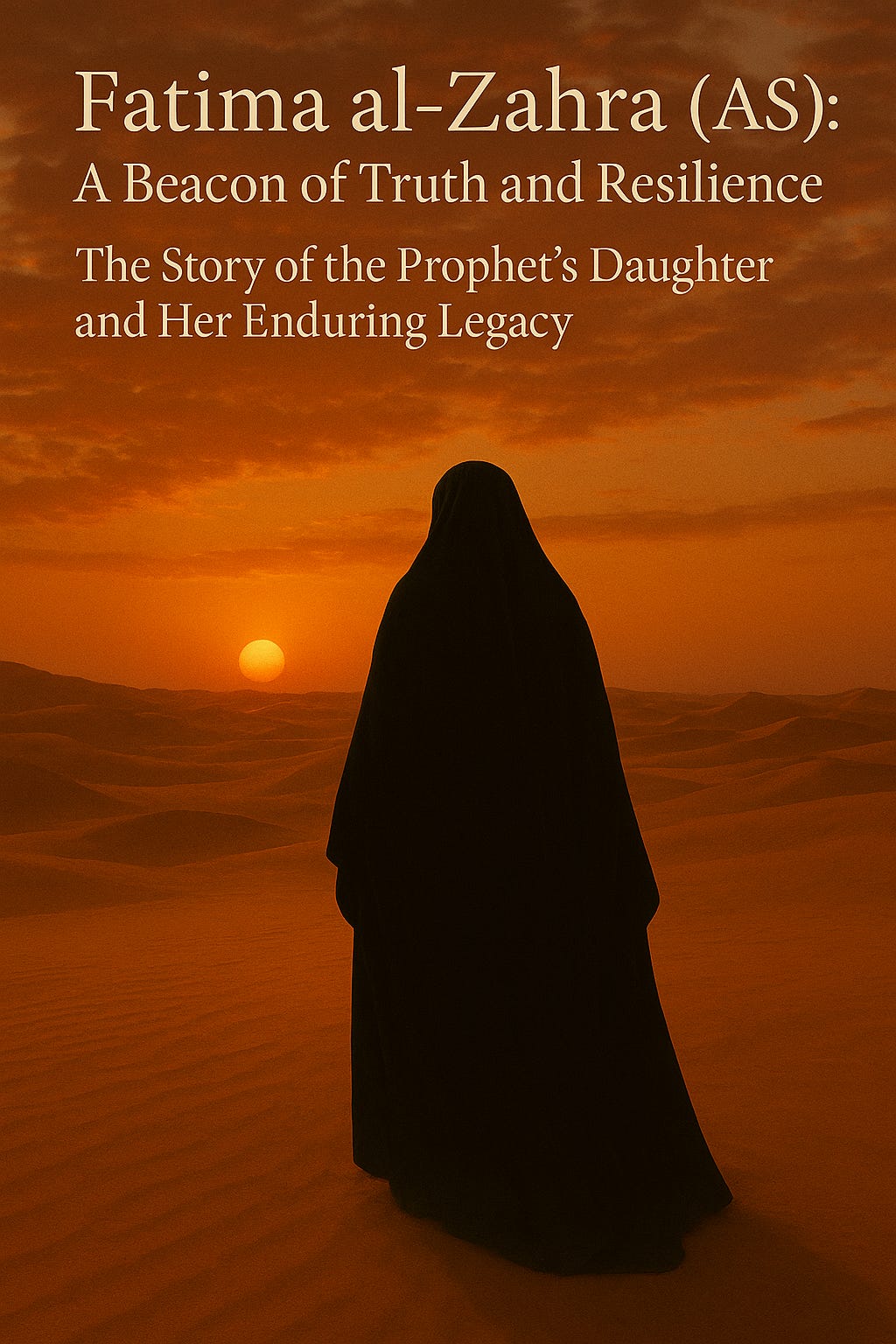Lady Fatima al-Zahra (AS): A Beacon of Truth and Resilience
The Story of the Prophet’s Daughter and Her Enduring Legacy
Fatima al-Zahra (AS), the beloved daughter of Prophet Muhammad (S) and Lady Khadija (AS), holds a unique and revered place in Islamic history. The Prophet (S) cherished her deeply, often standing in respect when she entered the room and calling her;
“The leader of all women in Paradise” and
“Part of me — whoever hurts her, hurts me.”
Many sought Fatima’s hand in marriage, but the Prophet (S) declined each proposal until Ali ibn Abi Talib (AS) — his cousin, student, and the first male to embrace Islam — came forward. The Prophet (S) smiled and affirmed,
“Many have asked for her hand but Allah has already married her to you in the heavens.”
Fatima (AS) and Imam Ali (AS) married and were blessed with children: Imam Hasan, Imam Hussain, Lady Zaynab, and Lady Umm Kulthum.
After the Prophet’s passing, some companions gathered at Saqifah and chose Abu Bakr as the new leader. Imam Ali (AS), occupied with the Prophet’s burial, was not present at this meeting. Fatima (AS) firmly believed that Ali (AS) was the rightful successor, based on the Prophet’s declaration at Ghadir Khumm.
At Ghadir Khumm, after his final Hajj, the Prophet Muhammad (S) gathered over 100,000 Muslims and raised Ali’s hand, proclaiming:
“Man kuntu mawlahu fa-hadha Aliyyun mawlah” (“Whoever I am the master (leader) of, Ali is his master (leader)”).
Fadak, a piece of land gifted to Fatima (AS) by the Prophet during his lifetime, was taken from her after his death. Abu Bakr claimed that prophets do not leave inheritance. In response, Fatima (AS) delivered a powerful sermon in the mosque, known as the Fadak sermon, defending her right with verses from the Quran.
Before his death, the Prophet (S) warned Imam Ali (AS) that people would betray him and advised him to remain patient and avoid conflict to protect the unity of Islam. Imam Ali (AS) followed this advice, knowing that any immediate conflict could have led to civil war at a time when Islam was still vulnerable.
Later, Umar ibn al-Khattab, Qunfudh, and others came to the house, demanding that Ali (AS) pledge allegiance to Abu Bakr. When Ali (AS) refused, they threatened to burn the house down. In their attempt to reach Imam Ali (AS), they forced the door open, unaware that Lady Fatima (AS) was behind it. While their primary intention was to confront Ali (AS), the forceful entry resulted in injury to Lady Fatima (AS) and the tragic loss of her unborn child, Mohsin.
Fatima’s health deteriorated after this incident, and she lived only about 75 to 95 days after the Prophet’s death. She passed away heartbroken, feeling betrayed by those around her. She requested to be buried secretly at night, and to this day, her exact burial place remains unknown.
Imam Ali (AS) endured this pain in silence, prioritising the unity and well-being of the Muslim community. He buried his beloved wife in the night, carrying the weight of sorrow for the rest of his life. As he expressed,
“I endured the pain, though it was bitter and suffocating.”
Though attempts were made to silence her, the legacy of Fatima al-Zahra (AS) endures. She remains a symbol of standing for truth and justice, even when the world turns against you. Her life continues to inspire generations to uphold integrity, resilience, and unwavering faith.
📚 Want to Go Deeper?
If you’d like to explore more about Imamah, leadership in Islam, and the powerful legacy of Lady Fatima al-Zahra (AS), visit this in-depth resource:
It’s a beautifully structured guide grounded in Quranic and Shia teachings—perfect for anyone seeking to understand the spiritual and historical significance of Fatima al-Zahra (AS) and her unwavering stand for truth.


